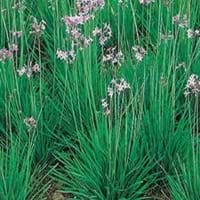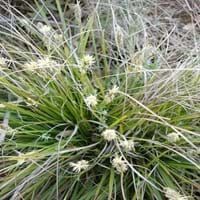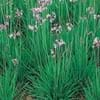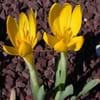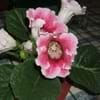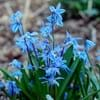Life Span
Annual
Perennial
Type
Bulb or Corm or Tuber
Sedge or Rush
Origin
South Africa
Japan
Types
Not Available
Narrow sedge
Number of Varieties
Not Available
Habitat
Tropical regions, Well Drained, Wet forest
Boggy areas, ditches, marshes, riparian zones, stream banks, Tropical regions, Wet forest
USDA Hardiness Zone
7-11
6-9
Sunset Zone
21,22
3a, 3b, 4, 5, 6, 7, 8, 9, 14, 15, 16, 17, 18, 19, 20, 21, 22, 23, 24
Habit
Clump-Forming
Arching/Fountain-shaped
Flower Color
White, Light Pink, Lavender
Brown
Flower Color Modifier
Bicolor
Bicolor
Fruit Color
Yellow green
Not Available
Leaf Color in Spring
Blue Green, Gray Green
Dark Green, Light Yellow
Leaf Color in Summer
Light Green
Dark Green, Light Yellow
Leaf Color in Fall
Several shades of Green
Dark Green, Light Yellow
Leaf Color in Winter
Light Green
Dark Green, Light Yellow
Leaf Shape
Long Narrow
Long Linear
Plant Season
Summer
Spring, Summer, Fall, Winter
Sunlight
Full Sun
Partial Sun, Partial shade
Growth Rate
Medium
Medium
Type of Soil
Loamy, Well drained
Clay, Loam, Sand
The pH of Soil
Neutral
Acidic, Neutral, Alkaline
Soil Drainage
Well drained
Well drained
Bloom Time
Early Summer, Summer
Spring
Tolerances
Dry soil, Shade areas
Drought, Heat Tolerance
Where to Plant?
Ground
Container, Ground, Pot
How to Plant?
Budding, From bulbs
Seedlings
Plant Maintenance
Low
Low
Watering Requirements
Keep ground moist, Never Over-water
Average Water Needs, Do Not over Water, Never Over-water, Prefer drip-irrigation instead of Over-head watering, Requires regular watering
In Summer
Moderate
Ample Water
In Spring
Average Water
Ample Water
In Winter
Less Watering
Average Water
Soil pH
Neutral
Acidic, Neutral, Alkaline
Soil Type
Loam, Sand
Clay, Loam, Sand
Soil Drainage Capacity
Well drained
Well drained
Sun Exposure
Full Sun
Partial Sun, Partial shade
Pruning
Cut out old flower stalks, Prune ocassionally
Remove damaged leaves, Remove dead leaves
Fertilizers
fertilize in fall, Nitrogen
organic fertlizers, very little fertilizers at a time, Water soluble fertilizers
Pests and Diseases
Bacterial leaf spot, Nematodes, Purple Blotch, Red blotch, Seedcorn maggot
Aphids, Mealybugs, Red blotch, Scale, Slugs
Plant Tolerance
Dry soil, Shade areas
Dry Conditions, Heat Tolerance
Flowers
Showy
Insignificant
Flower Petal Number
Single
Single
Fragrant Bark/Stem
Yes
No
Foliage Texture
Medium
Fine
Foliage Sheen
Matte
Glossy
Attracts
Bugs, Flying insects, Insects
Insects, Mealybugs
Allergy
Dermatitis, Pain and fatigue
Asthma
Aesthetic Uses
Showy Purposes, Used in parkland
Beautification, Borders, Cottage Garden, Landscape Designing, Showy Purposes
Beauty Benefits
Acne, For treating wrinkles, Making cosmetics, Removes pimples
No Beauty Benefits
Environmental Uses
Indoor Air Purification, Insect Repellent
Air purification, Food for insects, Shelter for wildlife, Versatility, Wildlife
Medicinal Uses
Acne, Aging, Antidepressant, epilepsy, Nerve pain, Obesity, Vomiting
Diuretic
Part of Plant Used
Bulbs
Leaves
Other Uses
Animal Feed, Can be made into a herbal tea, Oil is used in mosquito repellents, Use in Chinese herbology, Used as Ornamental plant, Used for its medicinal properties
Decoration Purposes, Showy Purposes, Used as Ornamental plant
Used As Indoor Plant
No
Yes
Used As Outdoor Plant
Yes
Yes
Garden Design
Edible, Herb / Vegetable
Container, Edging, Foundation, Groundcover, Mixed Border
Botanical Name
TULBAGHIA violacea
CAREX oshimensis 'Supergold'
Common Name
Society Garlic
Sedge
In Hindi
लहसुन
evergold Sedge
In German
Knoblauch
Evergold Segge
In French
Ail
Evergold carex
In Spanish
Ajo
Evergold juncia
In Greek
σκόρδο
evergold σπαθόχορτο
In Portuguese
alho
Evergold Sedge
In Polish
czosnek
Evergold turzyca
In Latin
allium
evergold Sedge
Phylum
Magnoliophyta
Tracheophyta
Class
Liliopsida
Liliopsida
Family
Liliaceae
Cyperaceae
Clade
Monocotyledonous
Angiosperms, Commelinids, Monocots
Tribe
Not Available
Cariceae
Subfamily
Lilioideae
Cyperoideae
Season and Care of Society Garlic and Evergold Sedge
Season and care of Society Garlic and Evergold Sedge is important to know. While considering everything about Society Garlic and Evergold Sedge Care, growing season is an essential factor. Society Garlic season is Summer and Evergold Sedge season is Summer. The type of soil for Society Garlic is Loamy, Well drained and for Evergold Sedge is Clay, Loam, Sand while the PH of soil for Society Garlic is Neutral and for Evergold Sedge is Acidic, Neutral, Alkaline.
Society Garlic and Evergold Sedge Physical Information
Society Garlic and Evergold Sedge physical information is very important for comparison. Society Garlic height is 45.70 cm and width 2.00 cm whereas Evergold Sedge height is 25.40 cm and width 30.50 cm. The color specification of Society Garlic and Evergold Sedge are as follows:
Society Garlic flower color: White, Light Pink and Lavender
Society Garlic leaf color: Blue Green and Gray Green
Evergold Sedge flower color: Brown
- Evergold Sedge leaf color: Dark Green and Light Yellow
Care of Society Garlic and Evergold Sedge
Care of Society Garlic and Evergold Sedge include pruning, fertilizers, watering etc. Society Garlic pruning is done Cut out old flower stalks and Prune ocassionally and Evergold Sedge pruning is done Remove damaged leaves and Remove dead leaves. In summer Society Garlic needs Moderate and in winter, it needs Less Watering. Whereas, in summer Evergold Sedge needs Ample Water and in winter, it needs Average Water.
